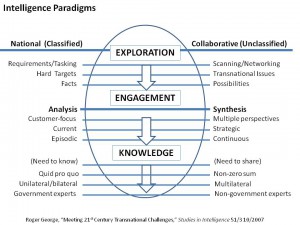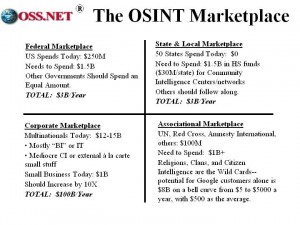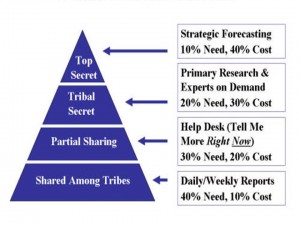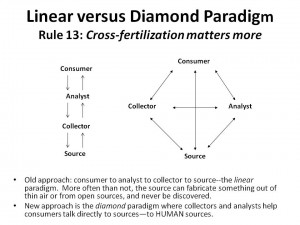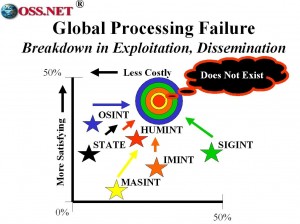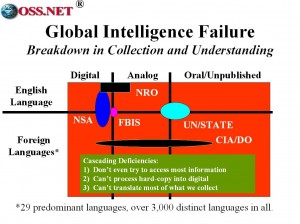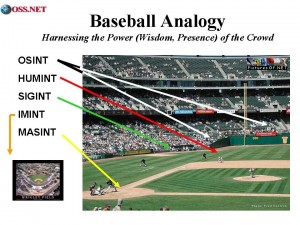
Inspired by Steve Denning, former Chief Knowledge Officer (CKO) of the World Bank, this graphic tells the story of OSINT in contrast to the traditional disciplines.
The text:
Still today, here's how the secret world plays the game:
HUMINT recruits a player to drop or catch the ball on command, but communications are so slow they inevitably screw it up.
SIGINT has listening devices in the dug-out, and tries to call the game from what is said there.
IMINT used to take an image of the field every three days, now they have a drone overhead and if they don't like the look of things, put a drone into the crowd (missing the umpire, who was the target).
MASINT tries to sniff the ball leaving the glove, and when that fails asks for billions more.
OSINT uses Twitter to both follow the score and compile impressions of each player–it's called crowd-soourcing.

